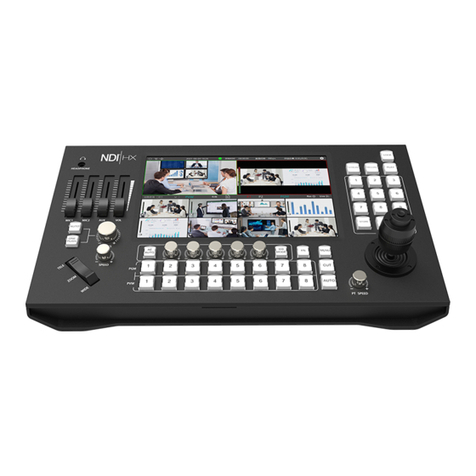
other controls may result in damage to the unit and may often require extensive work by a qualified
technician to restore the unit to normal operation;
e. When the product has been dropped or the cabinet has been damaged;
f. When the product exhibits a distinct change in performance, indicating a need for service.
Warranty Terms
For products purchased through resellers and distributors, please refer to the return policy of the
merchant from whom it was initially purchased; any products eligible for return or replacement through
the original merchant should be submitted through them. We will only accept direct return of a product for
replacement, under the stated warranty service after the original return time frame of place of purchase
has expired.
Standard Warranty
* Oton equipment is guaranteed against any manufacturing defects for one year for limited parts and
labor from the date of purchase.
* Oton equipment is guaranteed against any manufacturing defects for one year for limited parts and
labor from the date of purchase.
* The original purchase invoice or other documentary evidence should be supplied at the time of any
request for repair under warranty.
* The product warranty period beings on the purchase date. If the purchase date is unknown, the product
warranty period begins on the thirtieth day after shipment from Oton office.
* Warranty only valid in the country or region of purchase.
* Shipping expenses are at Oton for any delivery claim - you get a defective piece at box just opened.
What Is Not Covered
It is important to note that our warranty is not an unconditional guarantee for the duration of the Program.
Any replaced parts become the property of manufacturer. The Program does not apply to the software
component of a product or a product which has been damaged due to accident, misuse, abuse, improper
installation, usage not in accordance with product specifications and instructions, natural or personal
disaster, or unauthorized alterations, repairs or modifications.
The Program Does Not Cover Any Events Such As:
A. Any damages unrelated to manufacturing defects
B. Any unsuitable environment or use of the product, as determined by manufacturer
C. Any product which has been modified without official permission from manufacturer, or on which the
serial number or warranty sticker has been defaced, modified, or removed
D. Damage, deterioration or malfunction resulting from:
* Accident, abuse, misuse, neglect, fire, water, lightning, or other acts of god, commercial or industrial
use, unauthorized product modification or failure to follow instructions included with the product
* Third party products using manufacturer components will not be covered by warranty.
* Any shipment damages (claims MUST be made with the carrier)
* Unauthorized repairs to the product will void the warranty
Manufacturer reserves the right to refuse to service any product which has been altered, modified or
repaired by any non-authorized personnel.




























